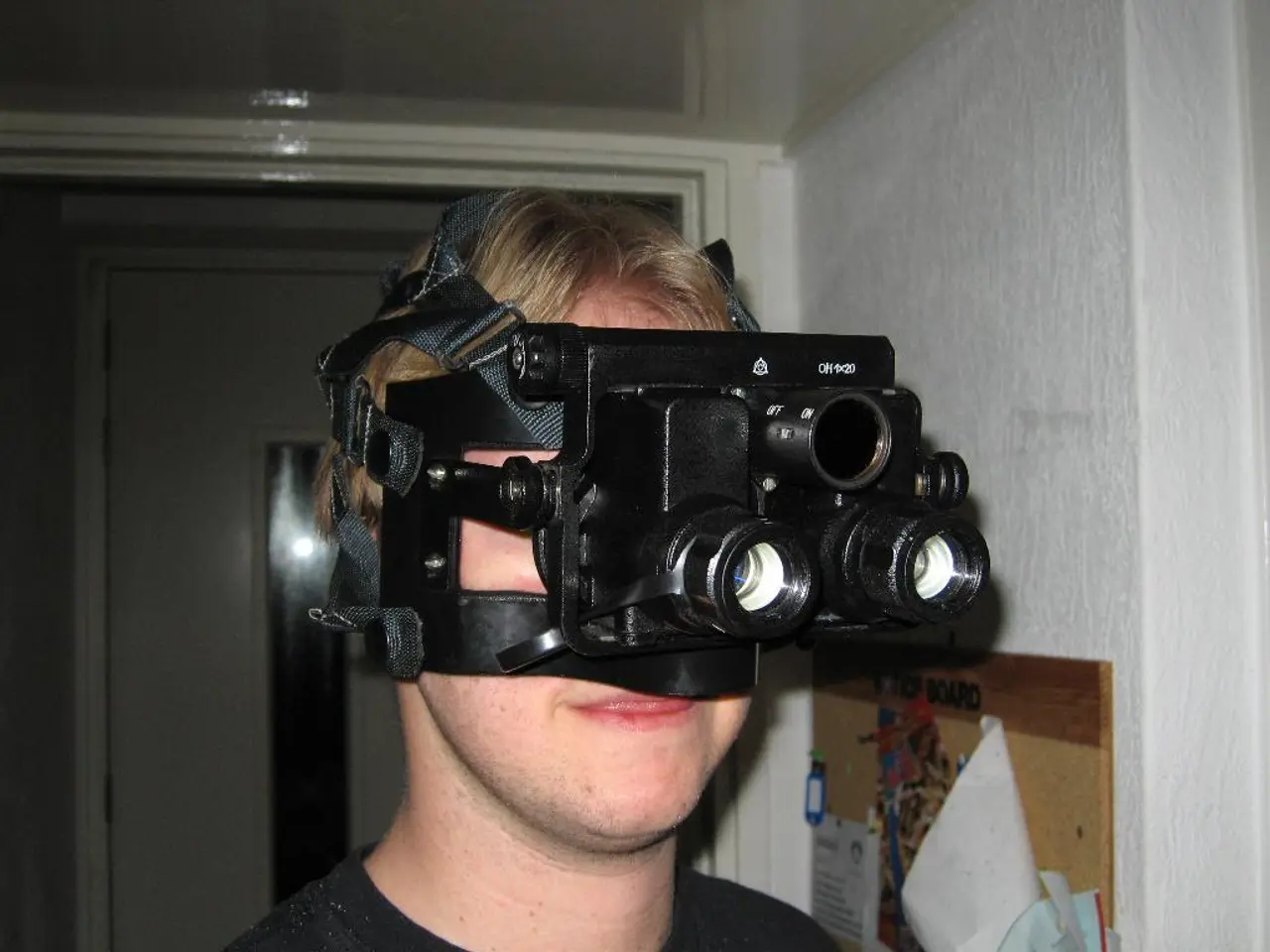Optimizing Corporate Advantages through Digital Education Strategies
In the realm of education and skill development, a new era is upon us. Virtual reality (VR) training is transforming the way we learn and practice, offering tangible advantages that are hard to ignore.
At the heart of this revolution lies the importance of establishing clear metrics to evaluate the effectiveness of VR training. This approach ensures that we can measure the impact of this innovative method and continually improve upon it.
VR training solutions are finding their way into various industries, offering a risk-free environment for learning and practicing. Interactive 3D systems, virtual replicas of real-world equipment or scenarios, are being used extensively for machinery training, medical procedures, and even military training. These systems allow users to practice without the risk of damaging expensive equipment or endangering lives.
One example of this is GE Healthcare's VR training solution for radiographers, providing a risk-free environment for learning and practicing various procedures. Similarly, the Aircraft Engine VR training system offers a detailed virtual environment for learning about complex equipment and technology.
Scenario-based virtual reality places users in realistic situations where they must make decisions based on the information provided. This approach is particularly effective for soft skills training. A virtual training solution for Gap Inc., for instance, teaches emergency response through active-shooter scenarios, delivering scalable, repeatable, and realistic training to retail staff.
Virtual training platforms offer immersive learning experiences, enhancing learner engagement and retention. They also provide data-driven insights, allowing for real-time adjustments and continuous improvement. Repurposing training videos from previous sessions can save resources and ensure consistent training across teams.
The latest advancements in virtual training systems include immersive VR and AR technologies, cloud-based collaborative platforms, AI-powered analytics, and integrated live-virtual-constructive (LVC) training environments. These enable hyper-realistic, interactive simulations from urban planning and infrastructure to combat training and corporate skills development.
These advancements help businesses reduce training time and costs, improve consistency and skill retention, and future-proof workforce skills by dynamically adapting to evolving roles. Despite higher initial costs and infrastructure challenges, modular and standardized solutions are emerging to broaden adoption.
Modular VR training is a customizable solution where different modules can be added or removed based on the training needs, offering flexibility and adaptability for various industries and requirements. Simplicity is key in designing VR training scenarios to address problems in the most straightforward manner.
Full immersion VR training offers a 360-degree environment for high-risk training scenarios, such as military or aviation simulations, where real-world training can be dangerous. Virtual training allows for the utilization of embedded analytics, resulting in detailed, data-backed reports to improve product adoption and training effectiveness.
Gamified VR training incorporates game elements into training to increase engagement and retention, making learning more appealing. Agile policies with training providers can help companies suspend unused classes and environments, optimizing for low spending and high yields.
The market for such virtual simulation and training systems is experiencing rapid growth, expected to expand from $5.9 billion in 2025 to $30.2 billion by 2034 at a 19.9% CAGR globally. This growth is driven by the widespread adoption of internet-based technologies and the growing demand for immersive training experiences.
In summary, virtual training systems today combine immersive reality, AI analytics, and cloud computing to deliver measurable improvements in engagement, efficiency, and effectiveness for businesses’ training programs while enabling scalable and personalized workforce development. The future of training looks bright, with VR training solutions poised for substantial growth in the enterprise training market, offering significant developments beyond 2030.
- The significance of measuring VR training effectiveness lies in continually improving innovative methods in the education and skill development sector.
- VR training solutions are permeating various industries, offering a secure environment for learning and practicing without the risk of damaging equipment or endangering lives.
- GE Healthcare's VR training solution for radiographers and the Aircraft Engine VR training system are examples of VR training solutions used for learning about complex equipment and technology.
- Scenario-based VR training immerses users in realistic situations to promote decision-making based on available information, particularly effective for soft skills training.
- VR training platforms offer immersive learning experiences, enhancing learner engagement and retention, while providing data-driven insights for real-time adjustments and continuous improvement.
- New advancements in virtual training systems include immersive VR and AR technologies, cloud-based collaborative platforms, AI-powered analytics, and integrated LVC training environments.
- Modular VR training offers customizable solutions based on training needs, providing flexibility and adaptability for various industries and requirements.
- Full immersion VR training offers a 360-degree environment for high-risk training scenarios, such as military or aviation simulations, where real-world training can be dangerous. This allows for the use of embedded analytics to improve product adoption and training effectiveness.




